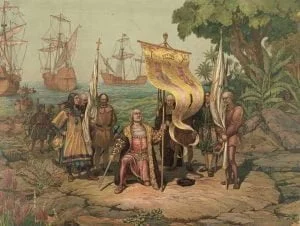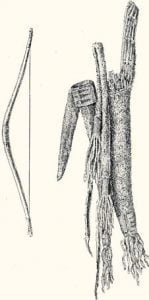Choctaw Traditions – The Council Fire, The Nahullo
The faces of the Choctaw and Chickasaw men of sixty years ago were as smooth as a woman’s, in fact they had no beard. Sometimes there might be seen a few tine hairs (if hairs they might be called) here and there upon the face, but they were few and far between, and extracted with a pair of small tweezers whenever discovered. Oft have I seen a Choctaw warrior standing before a mirror seeking with untiring perseverance and unwearied eyes, as he turned his face at different angles to the glass, if by chance a hair could be found lurking … Read more







